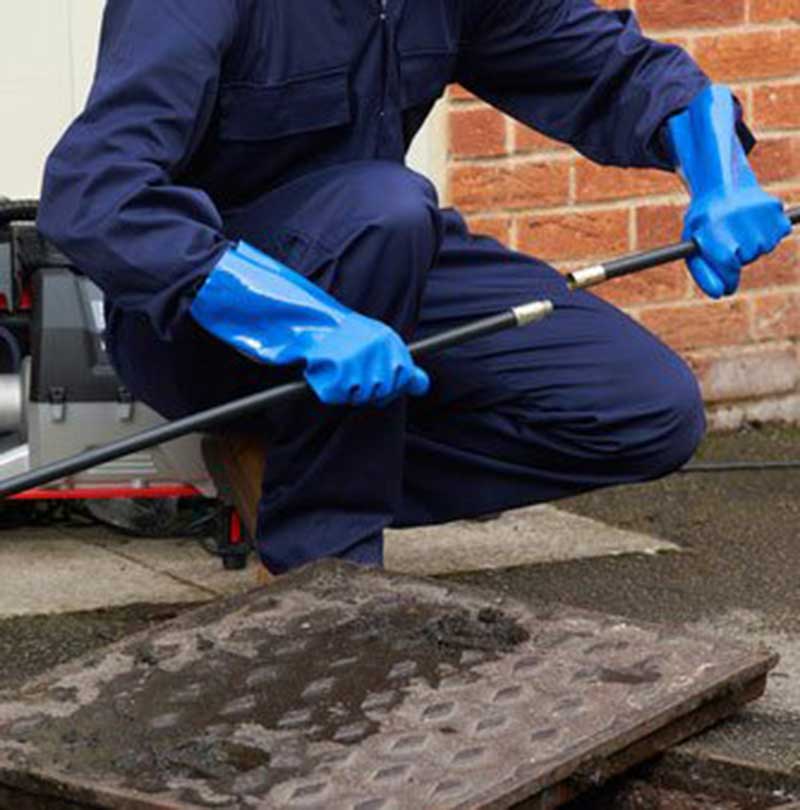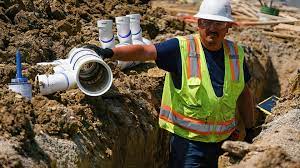
Introduction
An emergency sewer blockage can quickly turn into a homeowner’s worst nightmare. When your sewer system fails, it can lead to unpleasant odors, sewage backup, and potential health hazards.
Swift action is crucial to address this issue effectively and prevent further damage to your home.
In this comprehensive guide, we will explore the causes of emergency sewer blockages, the signs to watch for, and the steps to take in case of such an emergency.
By following these guidelines, you can navigate this challenging situation with confidence and minimize its impact on your home.
1. Understanding Sewer Blockages
Before delving into emergency sewer blockages, it’s essential to understand the common causes. Sewer blockages typically occur due to:
- Accumulated Debris: Over time, items like grease, hair, soap scum, and foreign objects can accumulate in the sewer lines, creating blockages.
- Tree Roots: Tree roots seeking moisture and nutrients can infiltrate sewer pipes through cracks or joints, causing clogs.
- Broken or Collapsed Pipes: Aging or damaged sewer pipes may collapse or develop significant cracks, leading to blockages.
- Flushed Inappropriate Items: Flushing non-biodegradable items like paper towels, feminine hygiene products, or wet wipes down the toilet can result in blockages.
2. Signs of an Emergency Sewer Blockage
Recognizing the signs of an emergency sewer blockage is crucial for prompt action. Common indicators include:
- Sewage Backup: Sewage backing up into your home through toilets, sinks, or floor drains is a clear sign of a sewer blockage.
- Slow Draining Fixtures: Multiple fixtures, such as sinks, tubs, and toilets, draining slowly or gurgling when flushed or drained.
- Unpleasant Odors: Foul odors emanating from drains or sewage backup areas.
- Puddles in Yard: Puddles or soggy spots in your yard, particularly around the area where the main sewer line is located.
- Gurgling Sounds: Gurgling sounds coming from drains or plumbing fixtures.
3. Immediate Actions to Take
In the event of an emergency sewer blockage, take these immediate actions:
- Turn Off Water Usage: Minimize water usage in your home to prevent further sewage backup.
- Avoid Using Plumbing Fixtures: Do not flush toilets, run faucets, or use other plumbing fixtures until the issue is resolved.
- Ventilate the Area: Open windows and doors to improve ventilation and help disperse foul odors.
- Stay Safe: Avoid contact with sewage water, as it can contain harmful pathogens. Wear appropriate personal protective equipment (PPE), including gloves and eye protection.
4. Contacting Professional Help
Emergency sewer blockages often require the expertise of professional plumbers. Contact a licensed and experienced plumber as soon as possible.
Inform them of the situation and provide details of the signs you’ve observed. A professional plumber will assess the severity of the blockage and take appropriate steps to clear it.
5. Temporary Measures for Sewage Backup
While waiting for the plumber to arrive, you can take temporary measures to mitigate the impact of sewage backup:
- Block Affected Drains: Use towels or rags to block off drains and prevent sewage from flowing into other areas of your home.
- Contain Contaminated Areas: Isolate the affected areas to minimize the spread of sewage.
- Dispose of Contaminated Materials: Safely dispose of any items that have come into contact with sewage.
- Clean and Disinfect: Once the blockage is resolved, thoroughly clean and disinfect affected areas to eliminate harmful bacteria and odors.
6. Assessing and Clearing the Blockage
Clearing a sewer blockage is a complex task best left to professionals. Here are the steps a plumber may take to address an emergency sewer blockage:
- Assessment: The plumber will use specialized tools like sewer cameras to assess the blockage’s location, cause, and severity.
- Clearing Blockage: Depending on the blockage’s nature, the plumber may use equipment such as drain snakes, hydro-jetting, or sewer rodding to clear the obstruction.
- Repairs: If the blockage is caused by damaged or collapsed pipes, the plumber will recommend and perform necessary repairs or replacements.
- Inspection: After clearing the blockage, a follow-up inspection ensures that the sewer system is functioning correctly.
7. Preventative Measures
Sewer blockages can be a major hassle and can cause serious damage to your property. Don’t wait until it’s too late to take preventative measures.
Here are some tips on how to keep your sewer system working smoothly and avoid future emergencies.
Regular maintenance is one of the best strategies to prevent blockages. Scheduling routine inspections and maintenance can help identify any potential issues early.
Proper disposal of waste is also crucial. Avoid flushing non-biodegradable objects down your toilets which can clog your sewer lines.
Trees near your sewer lines can cause root intrusion which can result in blockages. Professional tree root management can prevent root intrusion.
Additionally, periodic sewer line inspections can detect any issues that may be present before they become emergencies. Use cameras to inspect your sewer lines to keep them clear.
By adopting these preventative measures, you can reduce the likelihood of emergency sewer blockages.
8. Conclusion
An emergency sewer blockage can be a distressing experience for any homeowner.
Understanding the causes and signs of sewer blockages, taking immediate actions to mitigate damage, and contacting professional help are essential steps in resolving the issue.
Remember to prioritize safety and wear appropriate PPE when dealing with sewage.
While temporary measures can provide immediate relief, it’s crucial to rely on professional plumbers to assess, clear, and repair sewer blockages comprehensively.
Additionally, adopting preventative measures can help reduce the risk of future sewer blockages, ensuring the ongoing functionality of your sewer system and the safety and comfort of your home.
By following the steps outlined in this guide and staying proactive in maintaining your sewer system, you can navigate emergency sewer blockages with confidence and minimize their impact on your home and well-being.



